Kona Rides: The Positions of the Top Females
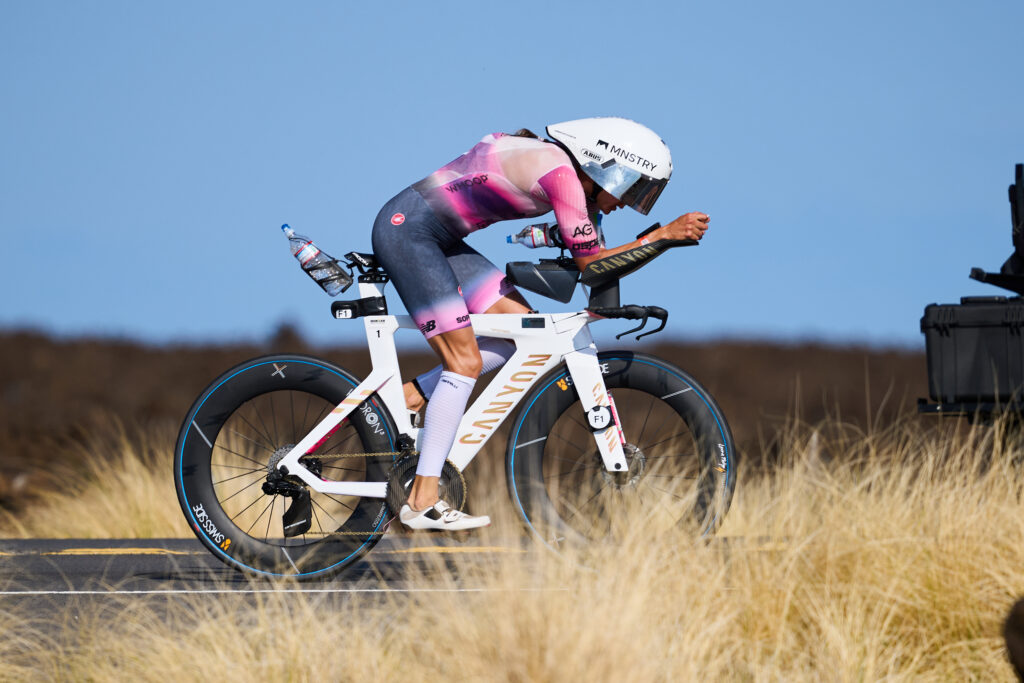
Before I begin, here is my disclaimer:
- These are static images taken at a single moment during the race.
- Camera angles can distort positions.
- I have no insights into any injuries, pain, or discomfort these athletes are managing.
- I assume that athletes have arrived at these positions through a deliberate process, supported by trial and error, bike fit professionals and some form of aerodynamic testing.
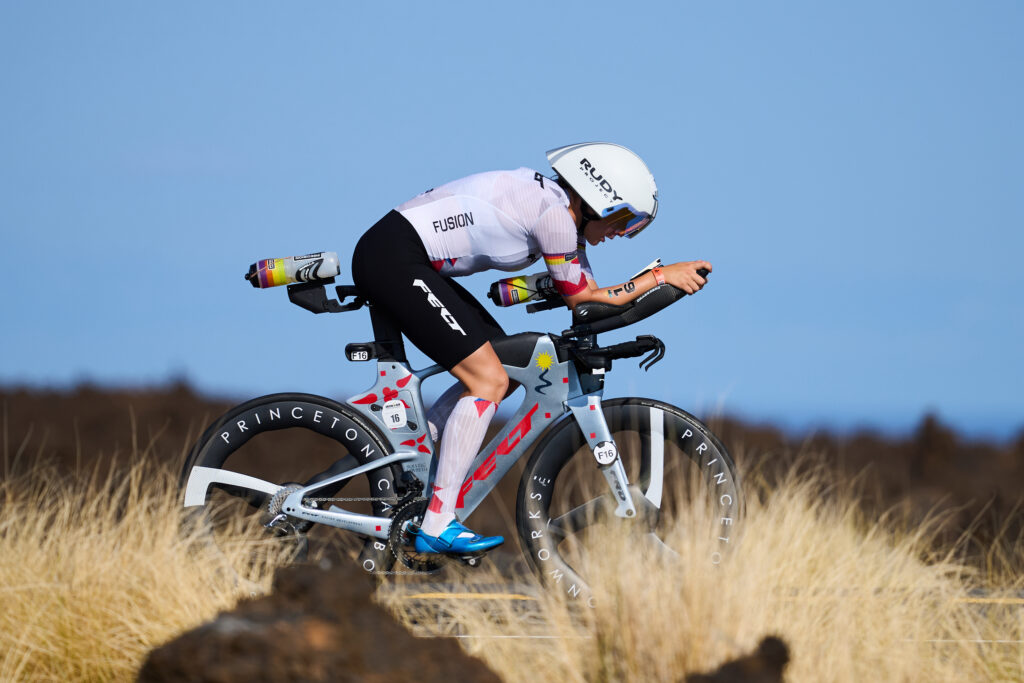
These are the best long-course triathletes in the world, all chasing the same goal. At this level, nearly everyone is on comparable tech, so equipment alone doesn’t deliver the same material edge it once did. You can always try to get fitter and push more watts, but gains aren’t guaranteed when you’re already operating at such a high level. Where do I think athletes can still find an advantage?
The biggest performance improvement an athlete can make on the bike is their aero position.
As I noted in my piece on the men’s positions at Nice, I’m not convinced the current trend of higher back angles with stretched arms are the most aerodynamic positions. When you think about improving CdA, you have to minimize frontal area and refine shape. I question whether shape improvements alone reliably offset the added frontal area.
I’m not suggesting athletes throw caution to the wind. This is triathlon, where comfort, power, and aerodynamics all matter. I am suggesting many athletes are still leaving aero on the table.
Also, “lower back angle” is only a proxy. You can have a low back angle but a high head position, or a higher back angle with a low head position.
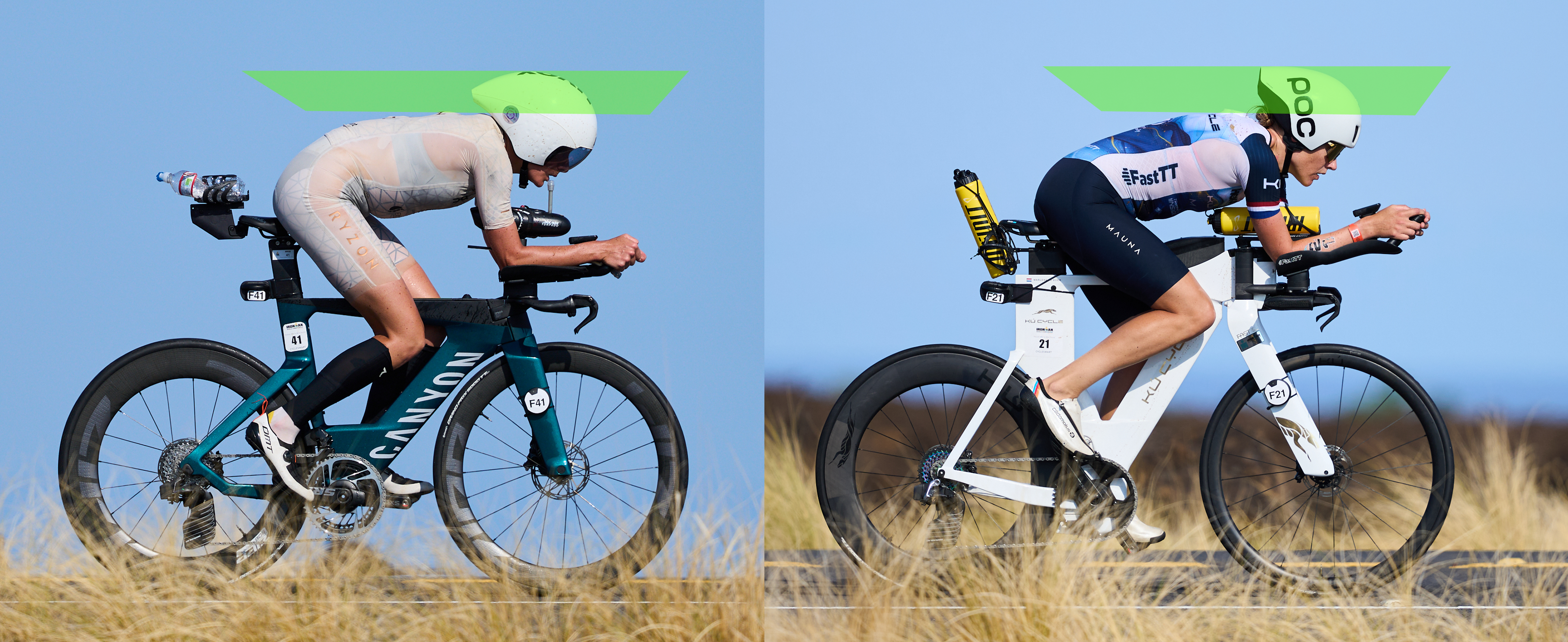
Leonie Konczalla and Marlene De Boer Low back angle, high head position
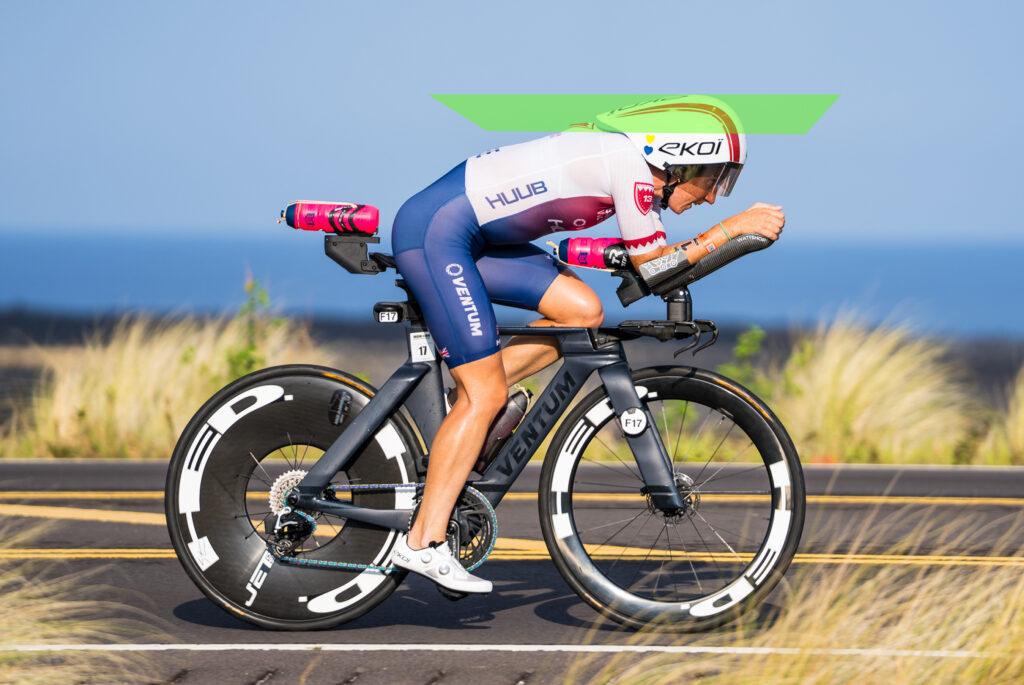
India Lee: High back angle, low head position
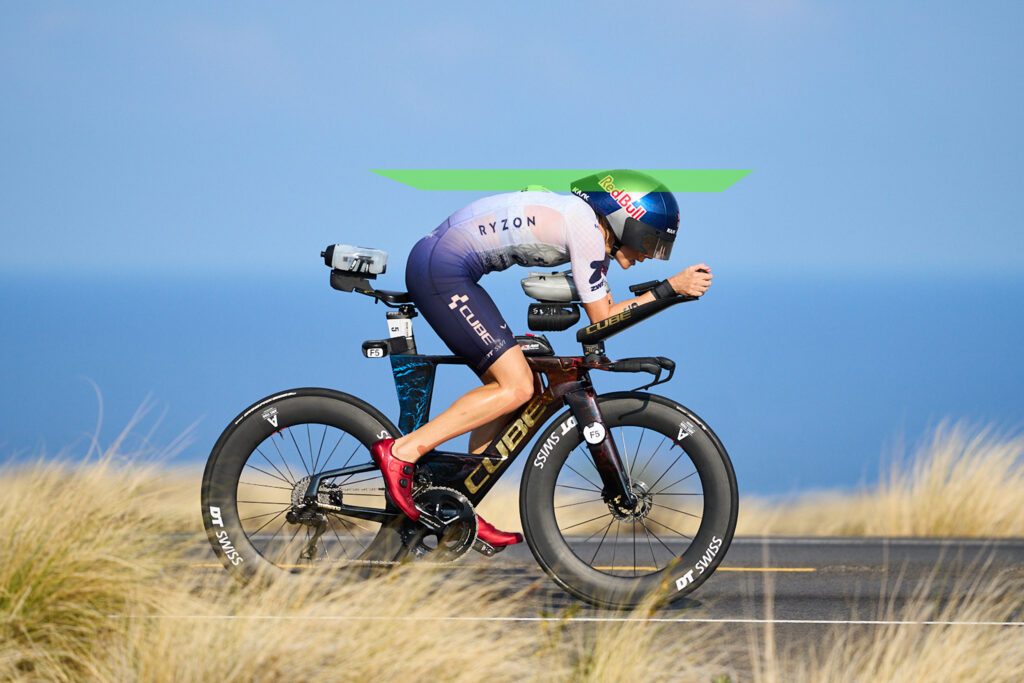
The aim is to show the wind as little surface area as possible by bringing the apex of the helmet as close as possible to the apex of the back…pursuing the lowest sustainable head and back position you can comfortably sustain.
DNF Taylor Knibb: 4:31:00
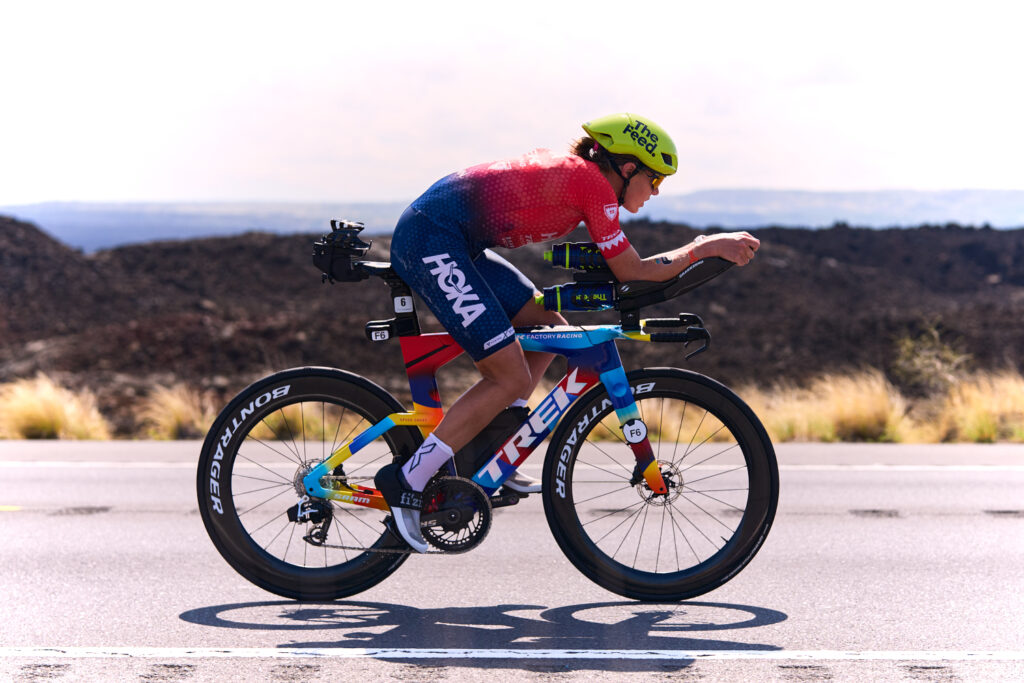
Taylor recently spent time at the Silverstone wind tunnel and reportedly saw significant gains. I am curious whether that informed her decision to race in an aero road helmet. I have navigated this choice in Kona before. In 2011 I persuaded Craig Alexander to switch from a road helmet to a TT lid based on three things: (1) off-season core temperature monitoring in Kona, (2) the competitive landscape, since nearly everyone else had gone aero, and (3) the literature at the time, which did not show a strong link between helmet type and elevated core temperature (mostly from military and equestrian studies). With what we know now, Taylor will want to focus on a deliberate heat management plan when she races in Kona next time.
As for her position, Taylor is a saddle chaser. If you push the bars forward she will stay planted on the seat and continue to stretch her arms out. I would like to see her ride a touch steeper. On the broadcast she at times looked in the back seat. I am not sure what changed. Normally her setup looks very solid, but the extra length may have made the position appear slightly disjointed. I am also used to seeing her in a TT helmet, which tends to magnify head posture cues. Hers is typically very good.
1.) Solveig Løvseth: 4:31:53
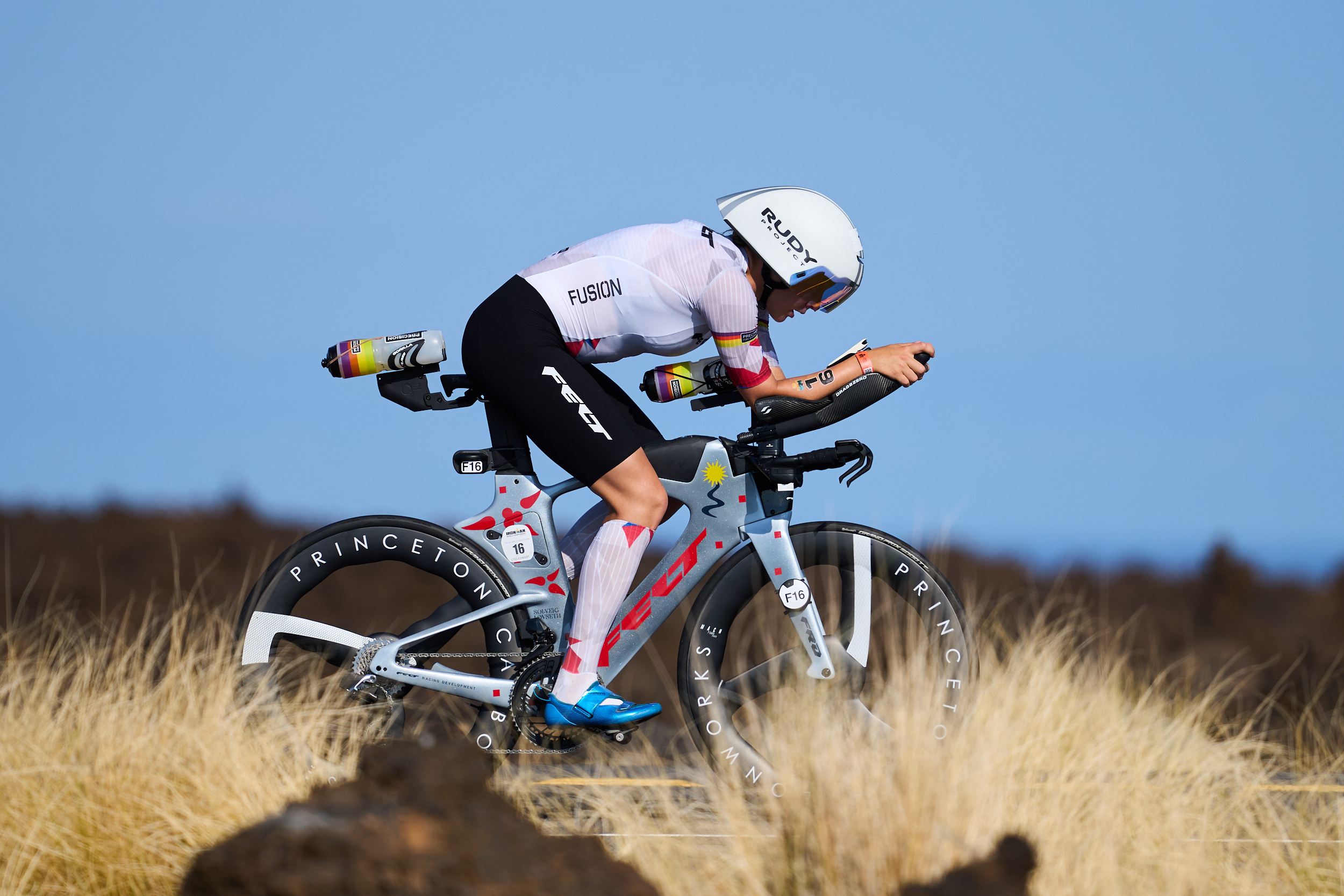
This is a good shot of Solveig who has a very robust position. If I were to work with her, I’d move her saddle forward allowing her to ride a little steeper. From there, I’d move the bars out the same amount and attempt to drop the front end, rotating her around the bottom bracket. These changes would preserve her open hip angle, but lower her back and head reducing frontal surface area.
DNF: Lucy Charles-Barclay: 4:33:58
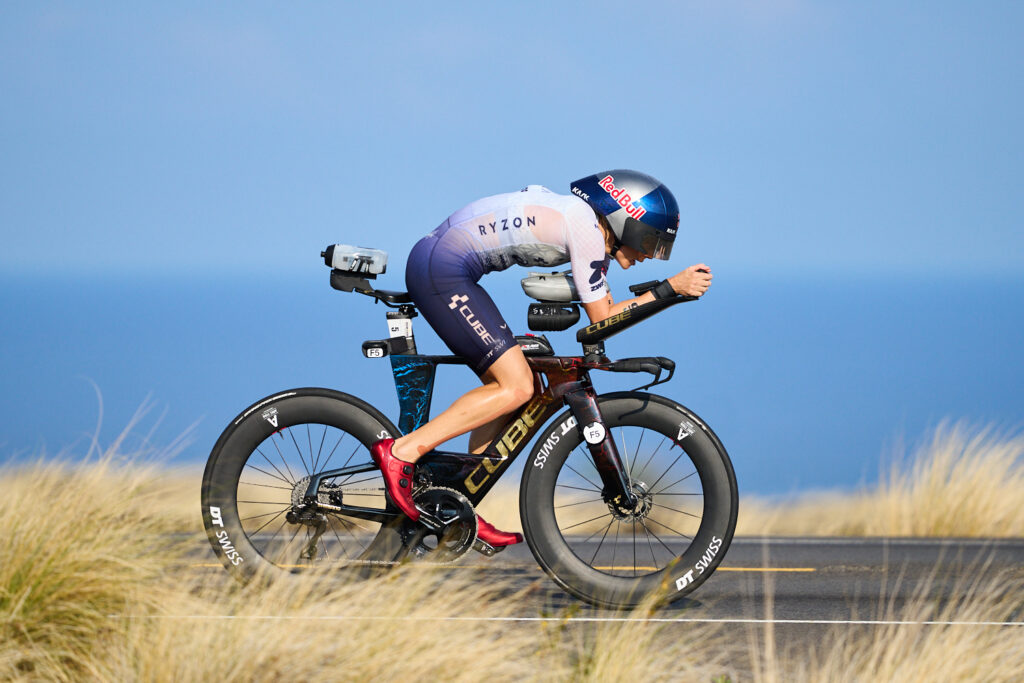
I am a big fan of how Lucy positions herself on the bike. She keeps her head low and maintains a fairly small gap between the apex of her helmet and the apex of her back. She rides steep and, unlike Knibb, looks like a bar chaser. If you extended her front end by 50 mm, she would likely follow the bars, maintaining the same shoulder angle, and slide forward off the nose of the saddle.
2.) Kat Matthews – 4:40:08
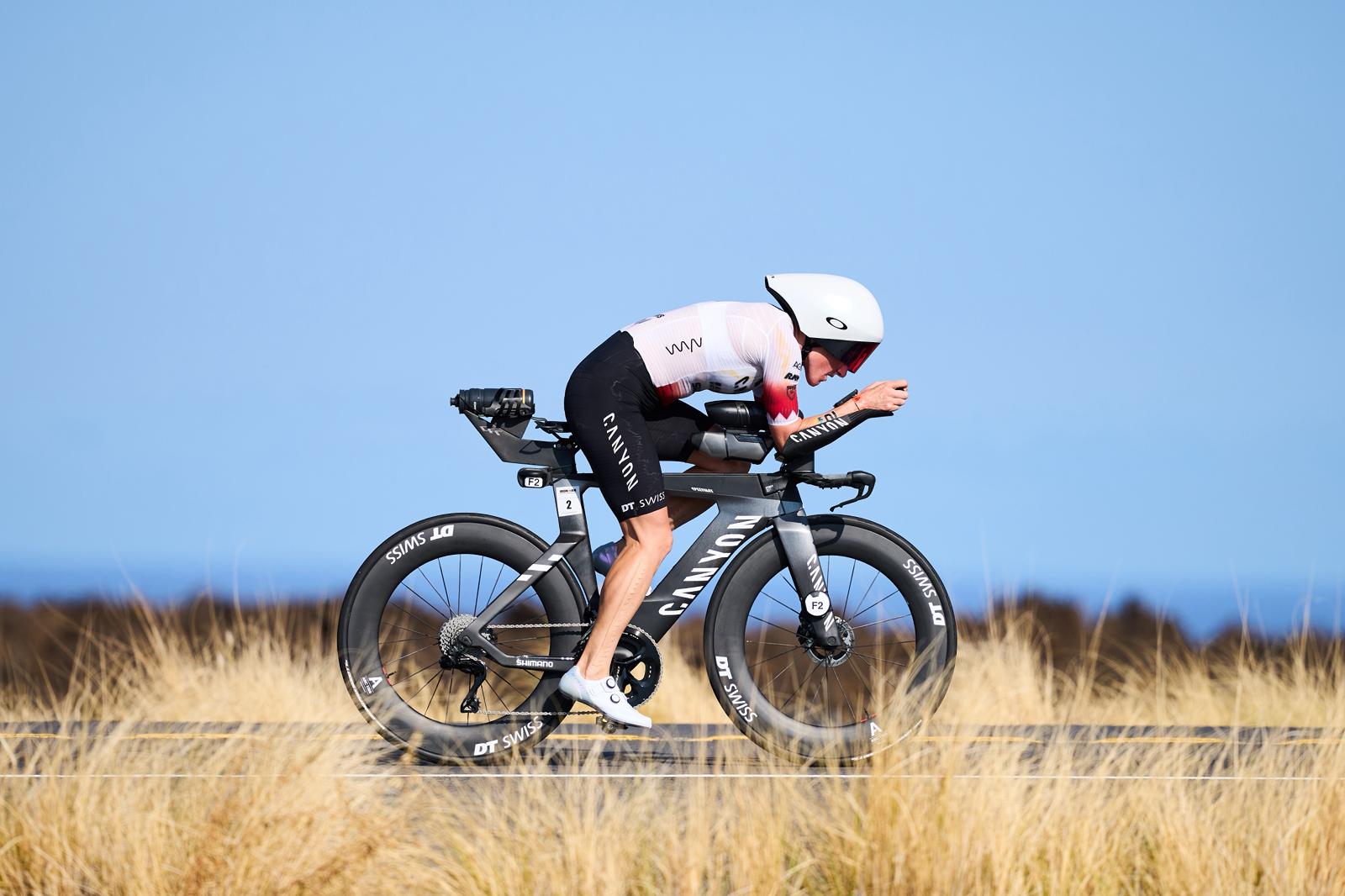
I watched most of the race, and Kat does a great job of keeping her head low. The image above doesn’t look perfect, but she typically has that helmet mated well with her back. If I were advising Kat, I’d see how she felt with a bit more reach. Last year, I mentioned I thought she could move her saddle further forward. Maybe she did this and it reduced her reach?
The biggest change I’d make that would yield the biggest benefit for Kat would be to move to a shorter crank length (150 mm). Watching Kat ride, she is turning much larger circles on the bike compared to taller athletes riding the same/similar crank length. I attempted this with Mirinda Carfrea (custom cranks made by her component sponsor) 10+ years ago and it didn’t stick. However, I think we are at a point where athletes are more open minded about going shorter. With WorldTour time trialists producing ~400 watts on short cranks, it’s hard to argue that shorter arms limit power.
After the crank change, I’d raise her saddle about 10 mm to account for the drop from her current 160 mm length and leave the front end as is. That would slightly reduce her back angle by roughly a degree. If she’s comfortable with the current reach, I’m fine with it, but I’d still have her trial an extra +20 mm to see how it feels.
3.) Laura Philipp – 4:40:26
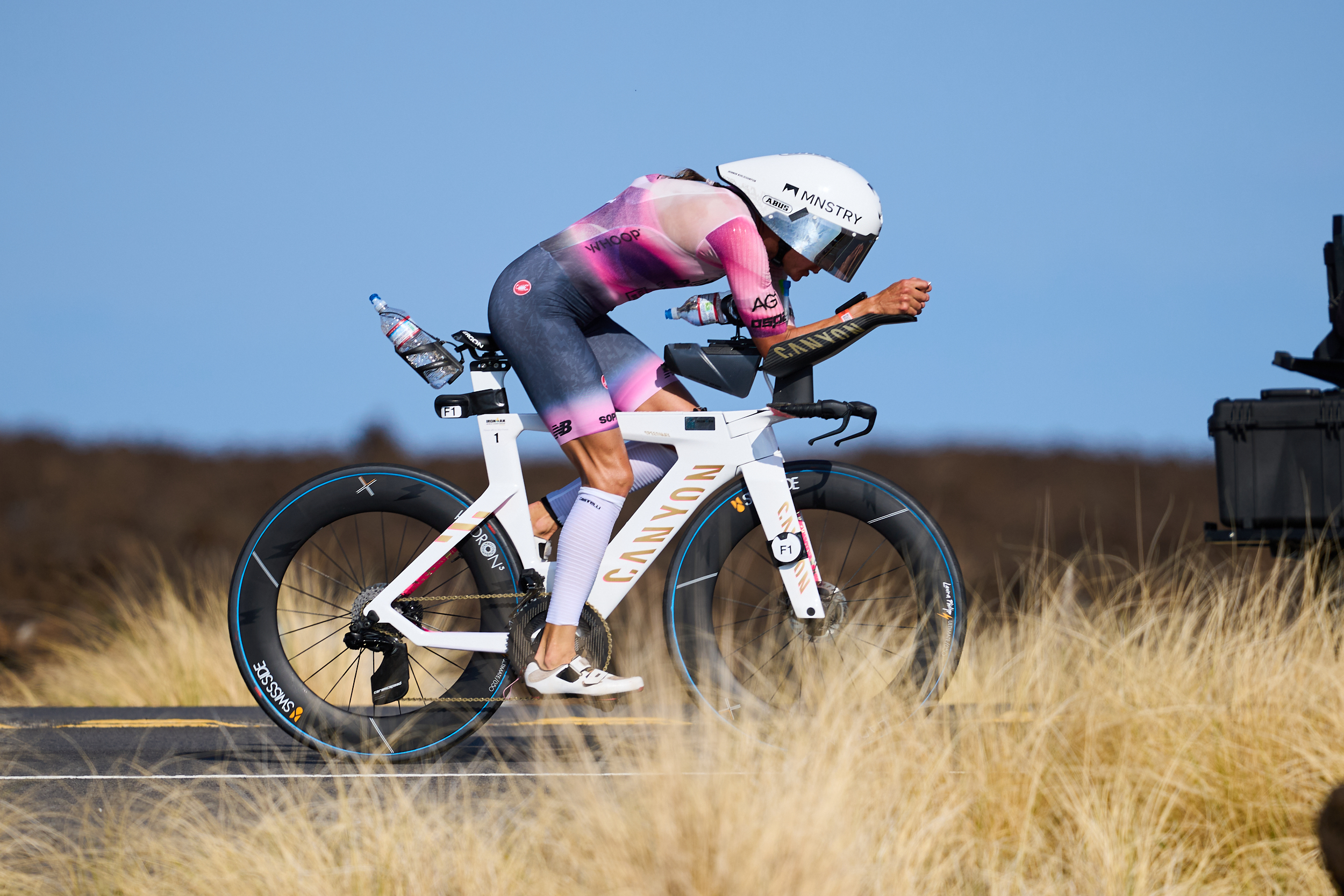
Laura, like many of the athletes above, is very aware of her head position and does a great job keeping it low. I may sound repetitive, but I still think she is leaving some aero on the table. I would test lowering her bars by 10 to 20 mm. It is a small change that should reduce frontal area, especially if she can hold the same head position. If keeping the hip angle open is a concern, she could move from 170 mm cranks to a shorter length.
4.) Hannah Berry – 4:44:37
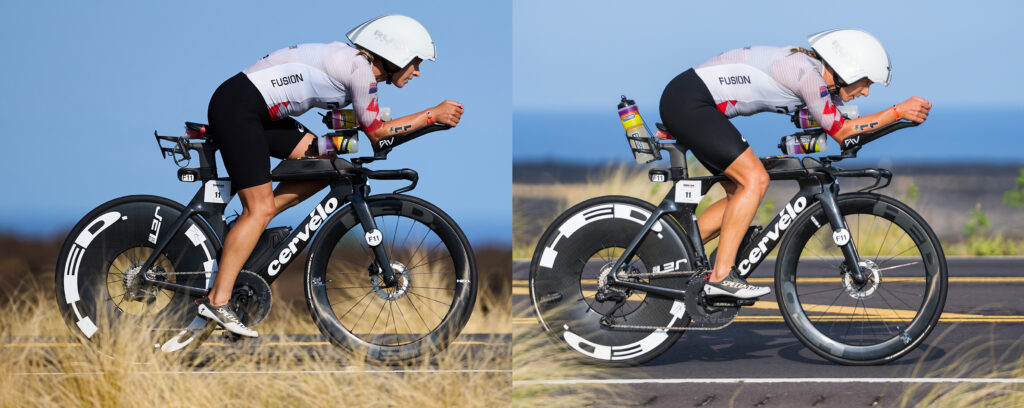
This is a perfect example of why a single photo can be misleading. In the first image on the left, Hannah appears in her all day position: forward on the saddle, looking ahead with a higher head position. In the second image on the right, she has slid back on the saddle, stretched out on the front, and tucked into a more aero posture. I assume she is still pedaling rather than coasting? The contrast shows how much an athlete can change positions simply by adjusting posture on the bike. This is a useful tool athletes can apply based on terrain, speed and race situation.
5.) Lisa Perterer – 4:40:50
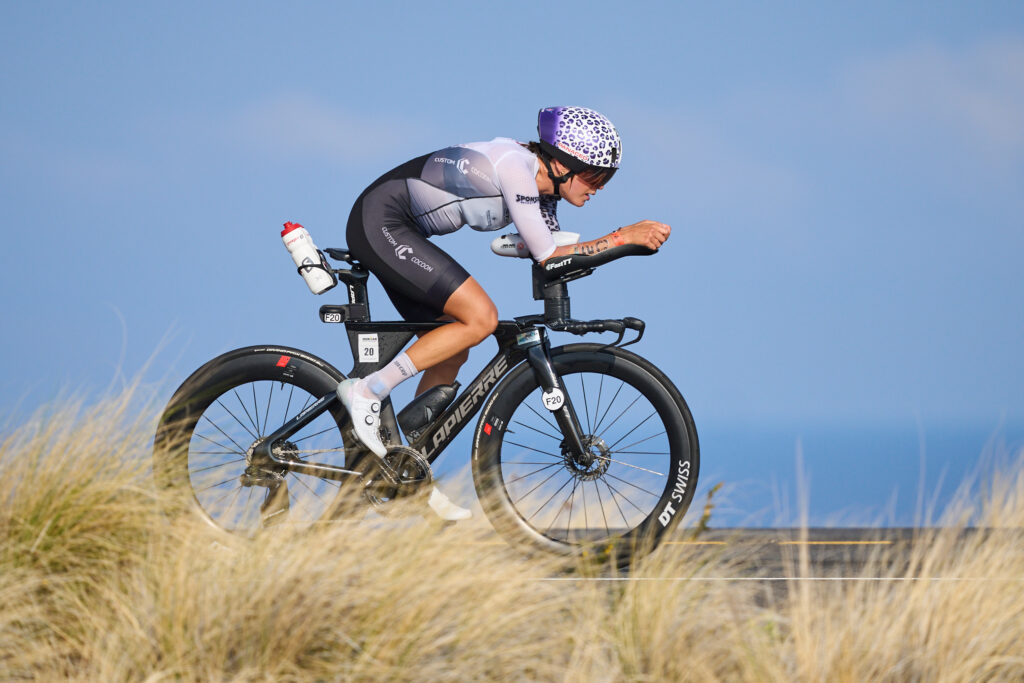
This is not the best photo angle to assess Lisa’s position, but she looked good on the bike during the broadcast. She stood out to me for her smooth riding style and pedaling technique. Based on an eyeball aero assessment, I would revisit helmet choice to find a model that flows more cleanly from the head to the back and shoulders. I would also move Lisa from 170 mm cranks to something shorter.
6.) Holly Lawrence – 4:47:46
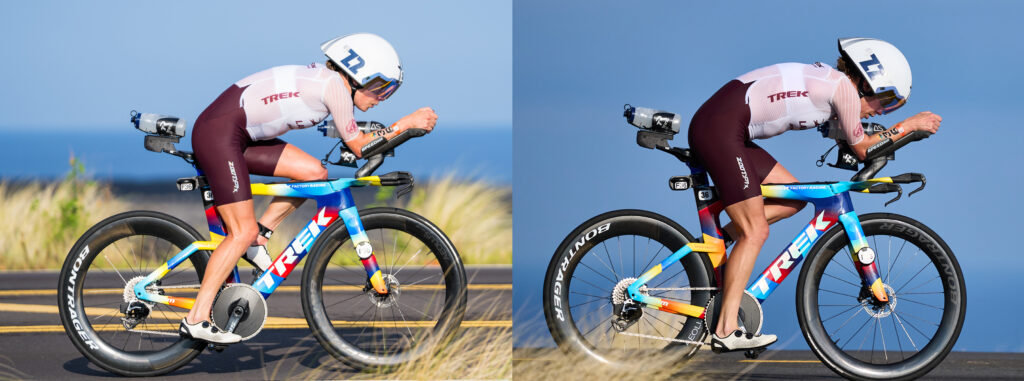
Holly’s position on the bike is okay. I would like to see a lower head position, though I’m not sure whether the limiter is head posture or the need for a lower front end.
What stands out most is her pedaling technique. In the images above, especially the one on the right, the crank is near the five o’clock position and her foot is close to full dorsiflexion with the heel down. In a time trial position the whole system rotates forward. A ninety degree ankle, once rotated, will appear more toe down relative to the horizon. Holly looks rotated forward yet keeps the foot nearly flat to the horizon, which likely reduces how efficiently she applies power.
In the fit studio I would stop the athlete at that point in the stroke and ask whether they can drive the pedal with the ankle in that position. I will also have them put on running shoes and ride. Without being clipped in, they will usually relax and open up at the ankle, showing that they do not need to pull back or up to create power.
7.) Jocelyn McCauley – 4:40:27
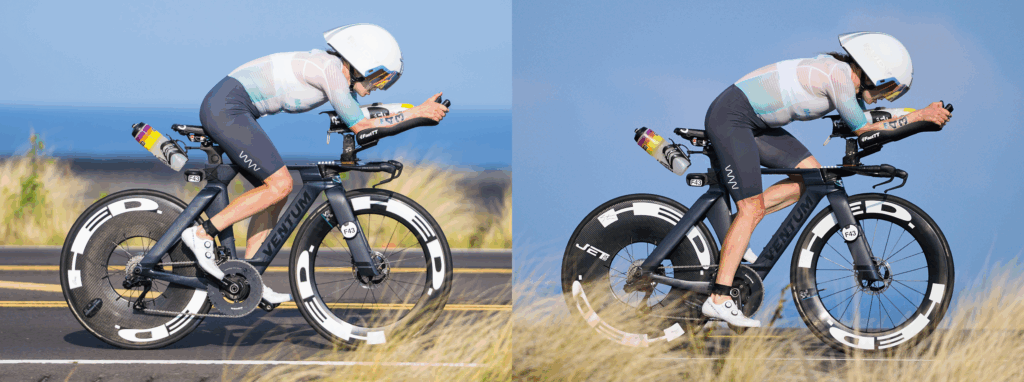
Jocelyn looks solid. She has definitely opted for a more stretched out position which naturally lowers the back angle. If she wanted to decrease the gap between the apex of her back and helmet she would need to explore other position options.
Others
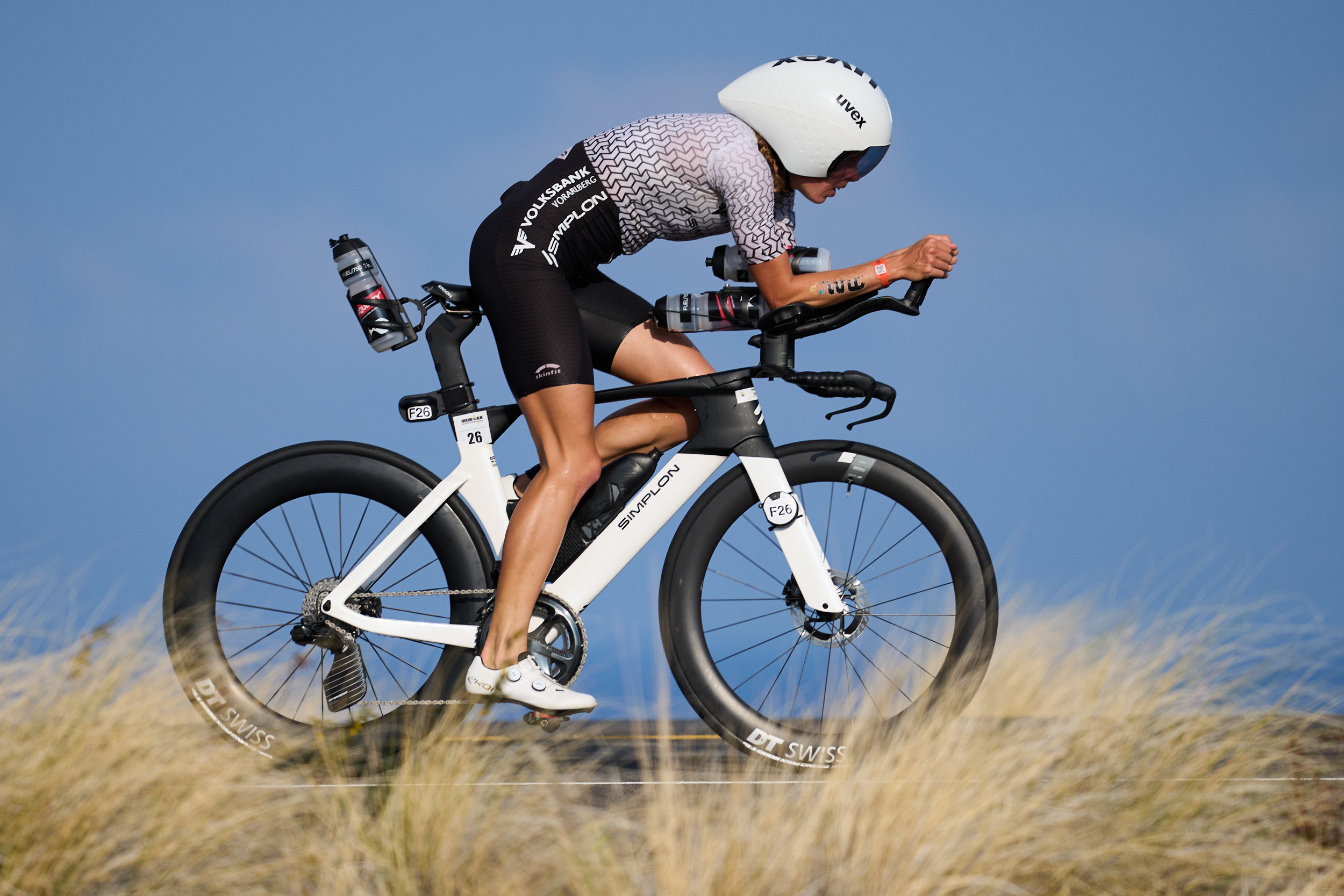
12.) Laura Jansen – 4:49:48: Conservative position, could go lower. The Uvex helmet looks huge!
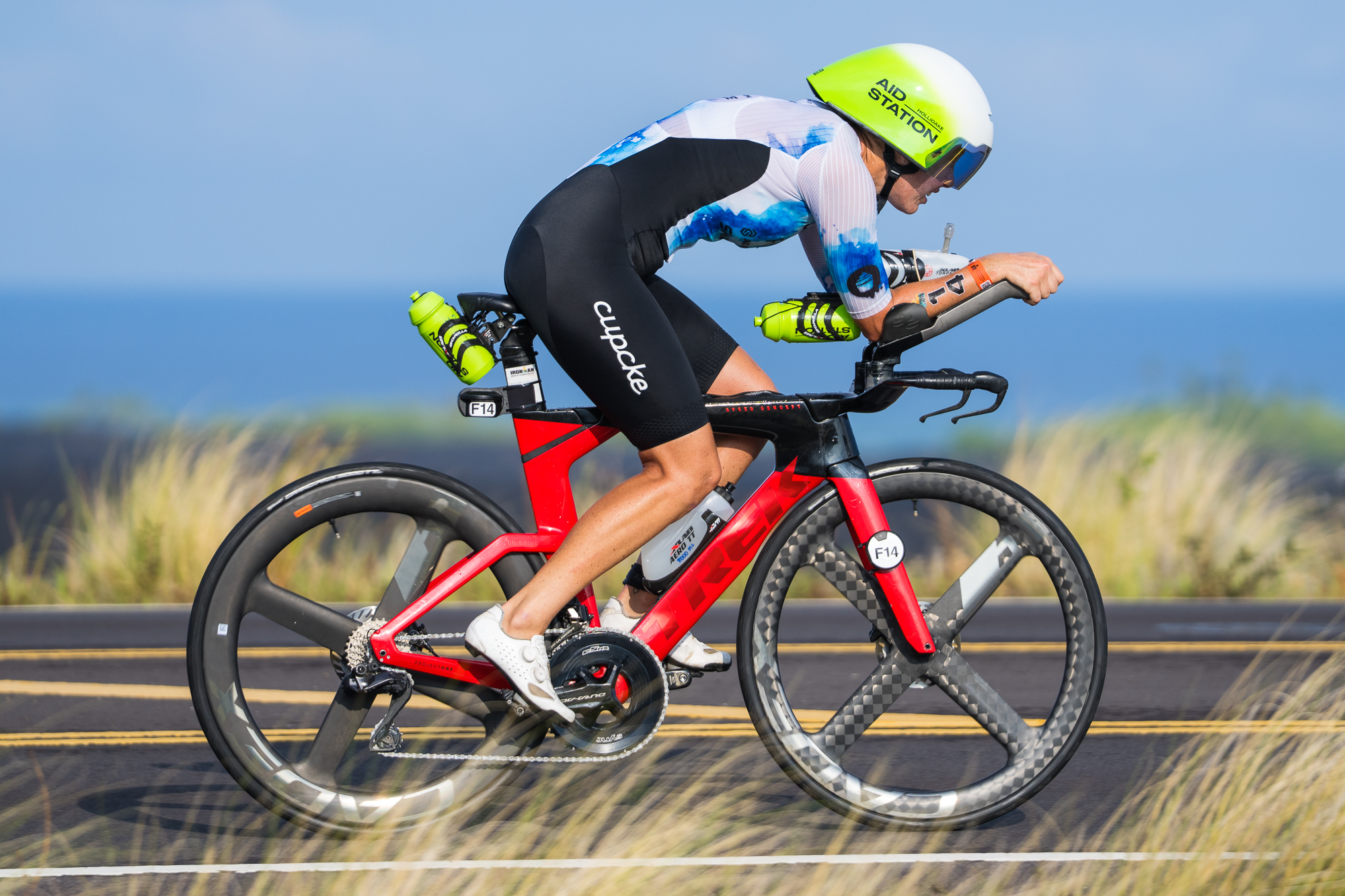
13.) Regan Hollioake – 4:45:19: Conservative position, could go lower. I do have a feeling Regan’s position looks better than what you see in this image.
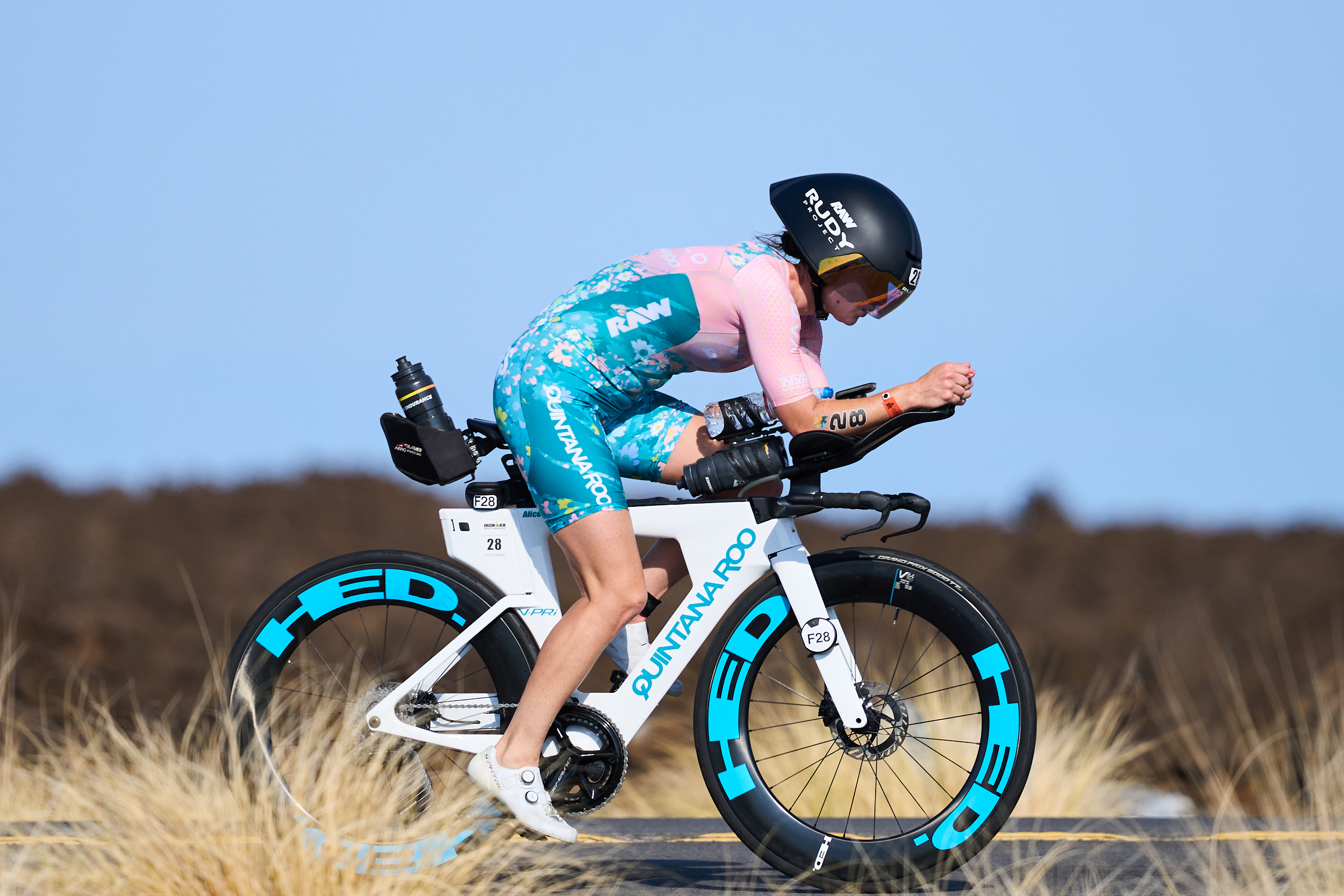
23.) Alice Alberts – 4:48:36: Conservative position, could go lower.
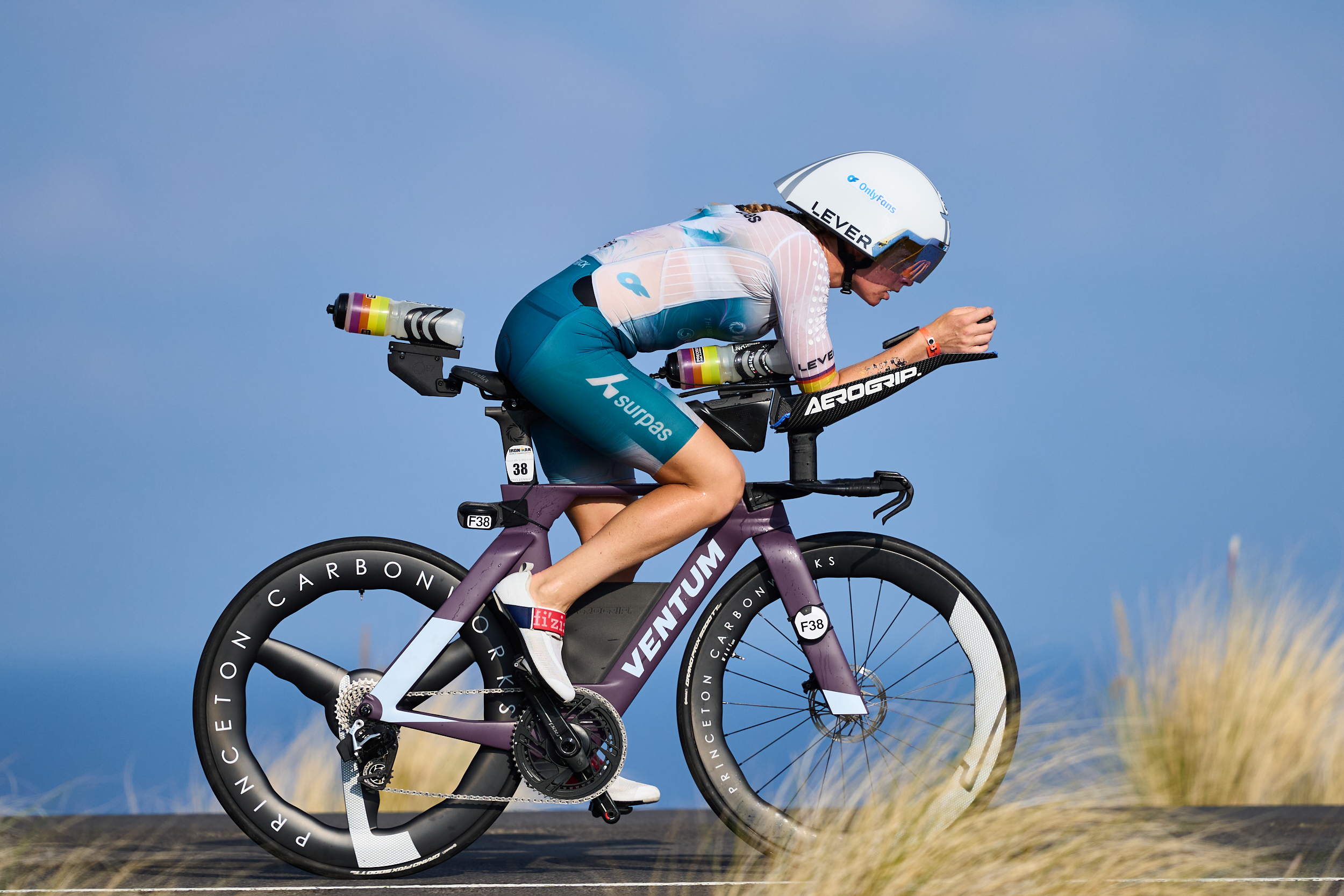
34.) Stephanie Clutterbuck – 4:49:32: I think this position would be better if Stephanie could lower the front end and/or add reach to the front end.
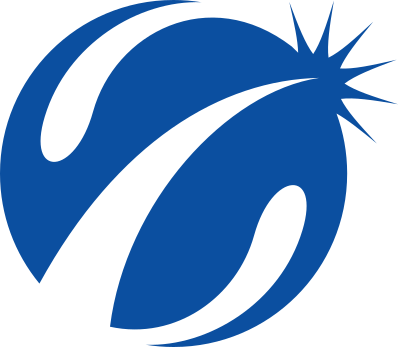



Very well written!
Jeroen
looks like some can size up on the frame